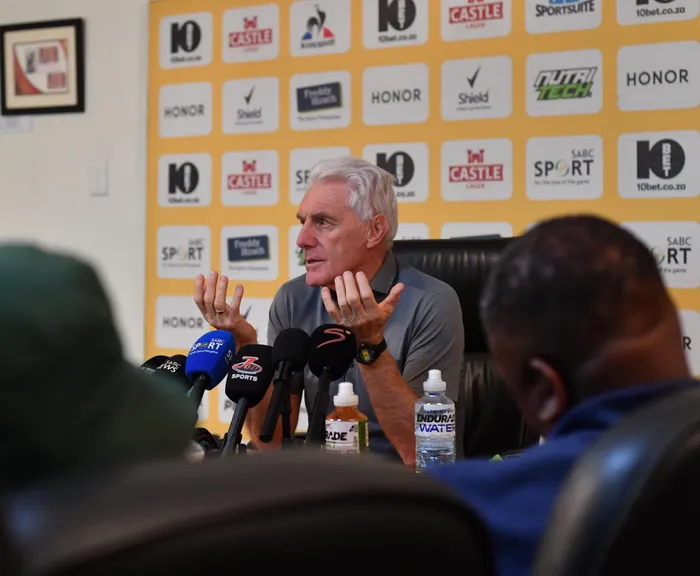Safa’s leadership crisis leaves Bafana exposed ahead of key tournaments
Football

Bafana Bafana’s build-up to major tournaments is under threat amid Safa’s ongoing leadership and financial turmoil. Photo: Backpagepix
Image: Backpagepix
COMMENT
Safa are facing a significant dilemma: the absence of a technical director is seriously compromising the national team’s preparations for crucial tournaments.
Since Walter Steenbok stepped down in March, the leadership gap has left Bafana Bafana vulnerable as they gear up for the Africa Cup of Nations in December and the Fifa World Cup in June 2026.
Steenbok’s exit was primarily due to salary disputes, revealing a troubling pay imbalance. He highlighted that his income barely stacked up against what Safa provides for national coach Hugo Broos.
“Fifa guidelines suggest that a technical director and the national coach should be on par salary-wise,” Steenbok noted, shining a light on a deep-rooted financial issue within Safa.
The Safa technical committee and the National Executive Committee have recommended that football coach Molefi Ntseki replace Steenbok. Ntseki has extensive coaching experience, including coaching various national youth teams, and previously leading the senior national team. There has been opposition to the recommendation, however, citing concerns that the members did not follow standard procedures.
There must also be concerns about Ntseki being suitably qualified for the post, when one looks at Steenbok's Master of Science in Sport Directorship from Manchester Metropolitan University, MBA in Sports Management from the Universidad Europea in Spain and a PhD in Sports Science from the University of Johannesburg, amongst other qualifications.
Ntseki would be the cheap option, and perhaps, like others, will be happy to accept a Safa post without a contract.
This financial turmoil presents operational challenges that are stifling Bafana’s preparedness for international competition. One significant hurdle is the lack of worthy opponents for friendly matches. Plans to play Brazil next month have reportedly fallen flat, leaving the team with a far less competitive game against Zambia at home on November 14.
Given Zambia’s struggles during their World Cup qualifying campaign, this match-up hardly seems fitting for a team aiming for greatness.
Safa CEO Lydia Monyepao has remained silent about the failed attempts to arrange friendlies abroad but hinted at hurdles on the horizon. “We don’t foresee the friendly matches happening in South Africa,” she remarked, highlighting ongoing structural issues within the organisation.
Meanwhile, Broos has expressed concerns about player fatigue, suggesting he would prefer to focus on a single friendly during the Fifa break rather than the two originally planned.
The void left by the absence of a technical director goes far beyond just disrupting match schedules. It’s a serious chink in the armour of the national team’s leadership, raising eyebrows over how management is truly functioning.
With manager Vincent Tseka at the helm — remember his notorious “yellow-card debacle” that almost derailed South Africa’s World Cup dreams — it’s clear that a significant overhaul is desperately needed. But the challenges run even deeper within the Safa.
The power dynamics, mainly dictated by its nine provincial regions, are stifling the association’s financial appeal to sponsors, making crucial investments feel like a distant dream. This bureaucratic bottleneck has left Safa struggling to meet its basic operational needs.
Sadly, the options for fixing this crisis are dwindling. Any meddling by the Minister of Sport or other government bodies could severely impact South Africa’s reputation on the global football stage — a risk Safa cannot afford.
Instead, the organisation faces a daunting journey to regain stability, all while crossing fingers for some much-needed improvements before the next set of international matches.
Related Topics: